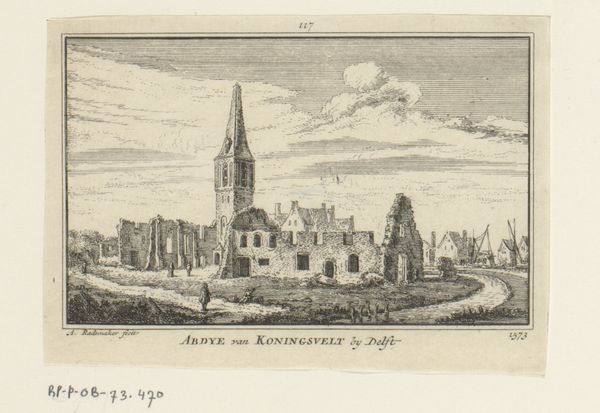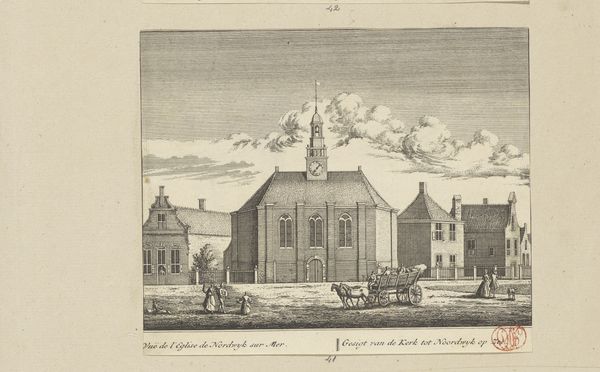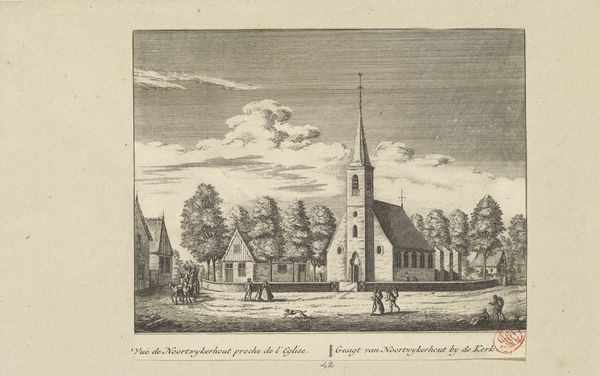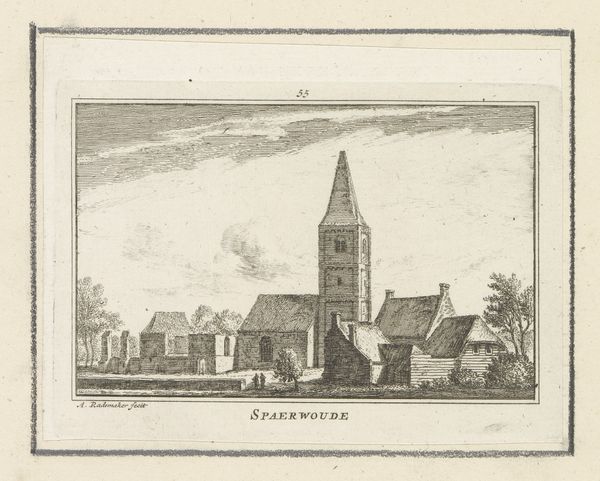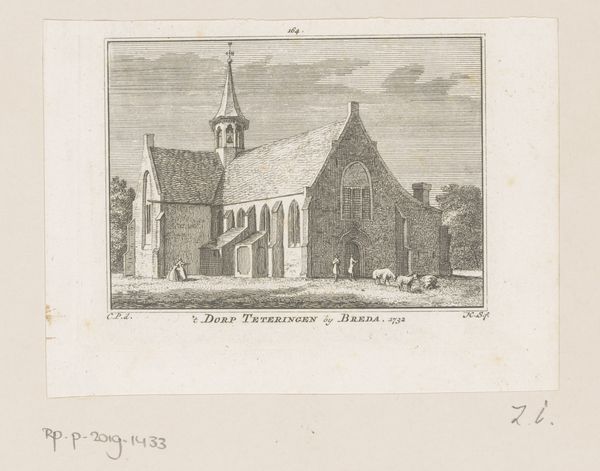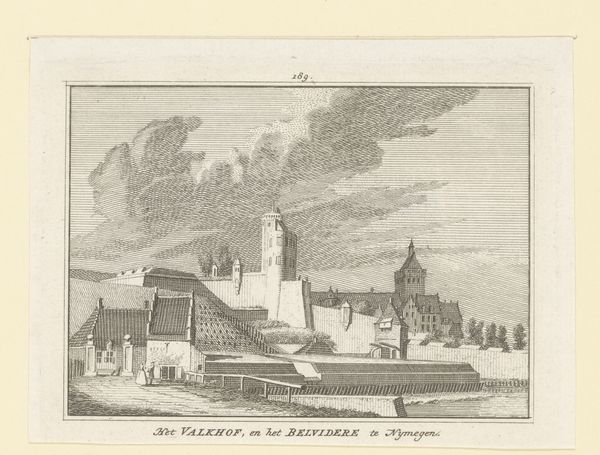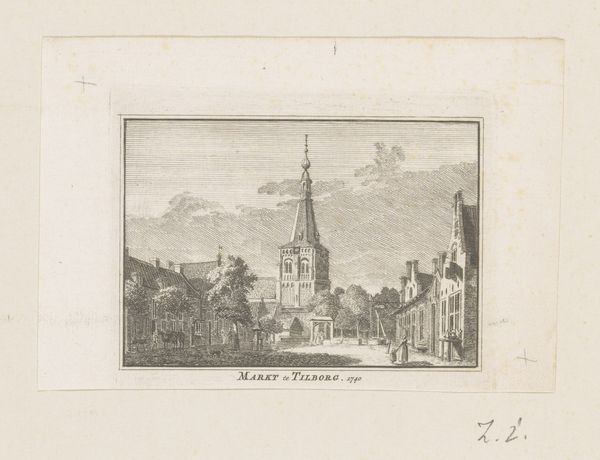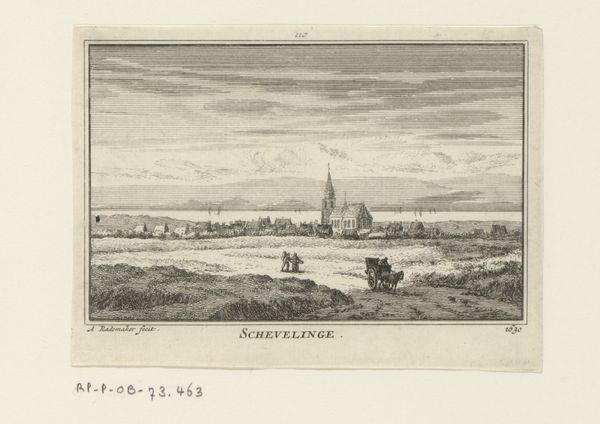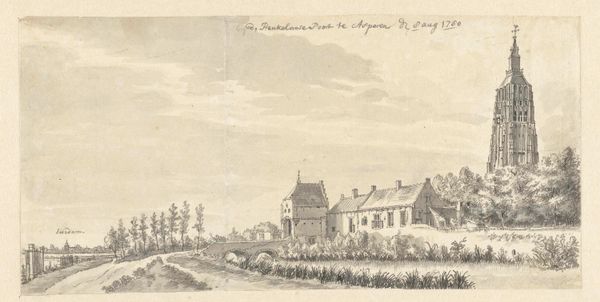
print, engraving, architecture
#
dutch-golden-age
# print
#
old engraving style
#
landscape
#
line
#
cityscape
#
engraving
#
architecture
#
realism
Dimensions: height 80 mm, width 115 mm
Copyright: Rijks Museum: Open Domain
Curator: Before us is "Gezicht op de kerk te Scheveningen, 1630" by Abraham Rademaker, created sometime between 1727 and 1733. It's an engraving. Editor: It’s stark. Bleak almost. The lines create a world that feels both precise and strangely dreamlike, almost ethereal. The textures are rendered through a delicate network of these finely etched lines. Curator: Rademaker uses line to create tone, mass, and space within the composition. Note the precision in the architectural details of the church. The artist establishes a structural order. It contrasts well with the organic rendering of the surrounding landscape. Editor: Indeed. And consider the physicality of creating those lines, the hand moving across the plate, each mark deliberate, embedding a sense of time and labor. It suggests a commitment, a deep consideration of both the subject and the material. Curator: The work certainly invokes notions of the sublime. It reminds me of picturesque landscape traditions; there is a harmonious balance of forms and representation. The positioning of the church as a focal point creates an effect that speaks of sacredness and reverence. Editor: Yet there's an implied socio-economic context that emerges for me through those lines, which speaks volumes. This work immortalizes both landscape and architectural form, inviting reflection about land use, ownership, and how representation influences our relationship with the spaces around us. Who commissioned it? And why? Curator: Well, engravings such as this one provided visual records of places, creating a sort of accessible archive of Dutch topography for the burgeoning middle class during that period. It allowed those who maybe could not physically journey there, to still participate visually, socially, and commercially in this visual world. Editor: This shifts our understanding. Rademaker’s engraving transcends mere aesthetics to become a statement on the distribution of both artistic work and access to art for wider segments of Dutch society during this epoch. Curator: So, we’ve looked at this through aesthetic theory and notions of structure and harmony, but also understood how that technique played a crucial role in creating and capturing Dutch landscape at the time. Editor: Exactly. It also reminds us to examine whose stories are told through the surviving artefacts. Thank you for bringing that to light.
Comments
No comments
Be the first to comment and join the conversation on the ultimate creative platform.

